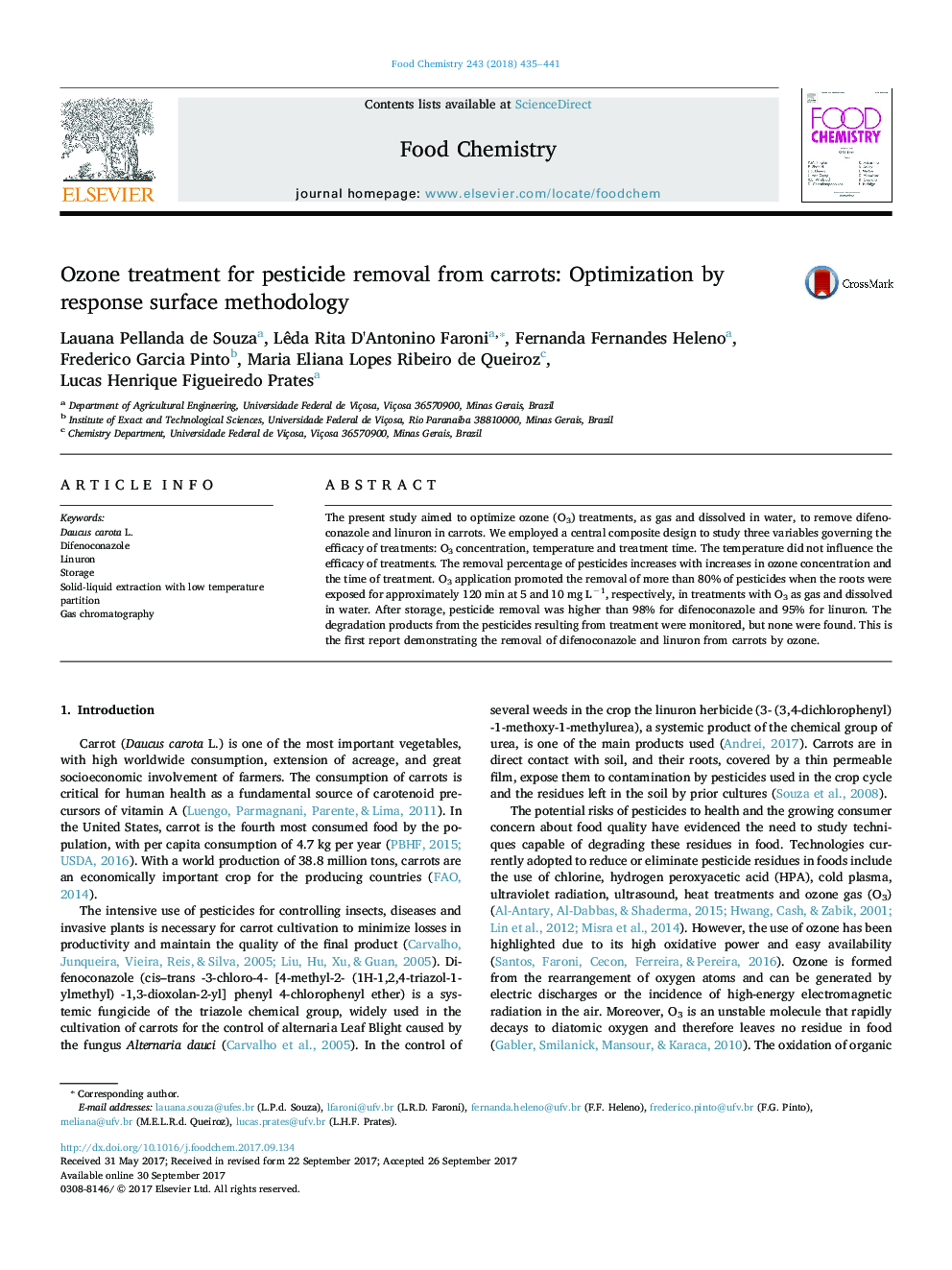| Article ID | Journal | Published Year | Pages | File Type |
|---|---|---|---|---|
| 5132569 | Food Chemistry | 2018 | 7 Pages |
â¢Pesticide removal in carrot has been reported.â¢Pesticide breakdown increases with increase in O3 concentration and treatment time.â¢After storage, pesticide removal was higher than 95%.â¢This is the first report on removal of difenoconazole and linuron from carrots by O3.
The present study aimed to optimize ozone (O3) treatments, as gas and dissolved in water, to remove difenoconazole and linuron in carrots. We employed a central composite design to study three variables governing the efficacy of treatments: O3 concentration, temperature and treatment time. The temperature did not influence the efficacy of treatments. The removal percentage of pesticides increases with increases in ozone concentration and the time of treatment. O3 application promoted the removal of more than 80% of pesticides when the roots were exposed for approximately 120 min at 5 and 10 mg Lâ1, respectively, in treatments with O3 as gas and dissolved in water. After storage, pesticide removal was higher than 98% for difenoconazole and 95% for linuron. The degradation products from the pesticides resulting from treatment were monitored, but none were found. This is the first report demonstrating the removal of difenoconazole and linuron from carrots by ozone.
